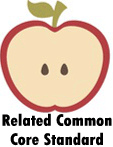Parts of a Book Worksheets To Print:
Cut and Paste - You will cut out six labels and place in the correct box.
Work Through - You will focus on the front, back, and spine sections.
Inside Out - The Table of Contents, in the beginning of the work, tells you where to find things inside the storybook. It tells you what page each chapter starts on. Sometimes it will also tell you what is in each chapter.
Shuffling Through - Which of the following can you use to find out where a specific subject is discussed in a work of nonfiction?
The Spine - The spine of a work holds the book together. The spine is between the front cover and the back cover. The thickness of the spine depends on how many pages the author put together for the reader.
Adventure - Tell us everything you can determine about this work.
Trace - Anyone who has trouble with the cut and paste would find this very helpful.
Lines It Up - Draw a line to the correct part of the storybook.
The Title Page - Design a title page for a book. You can make up the title, author, and publishing company. Feel free to add an illustration to your title page.
Endpaper - Sometimes a hardcover will have illustrations or a design on the inside of the front and back cover. This decorative paper is called endpaper.
The Pages - We explain and explore what a page truly is.
Trace & Write - Point to each portion that is named.
The Front Cover - The front cover is the first thing a person sees and feels. The front cover should be interesting and make you want to open it up and read it.
The Back Cover - The back cover of a book usually gives you information about what it is all about and provides a brief synopsis to an audience.
The Title Page - This usually shares with the reader all the data behind the work.
